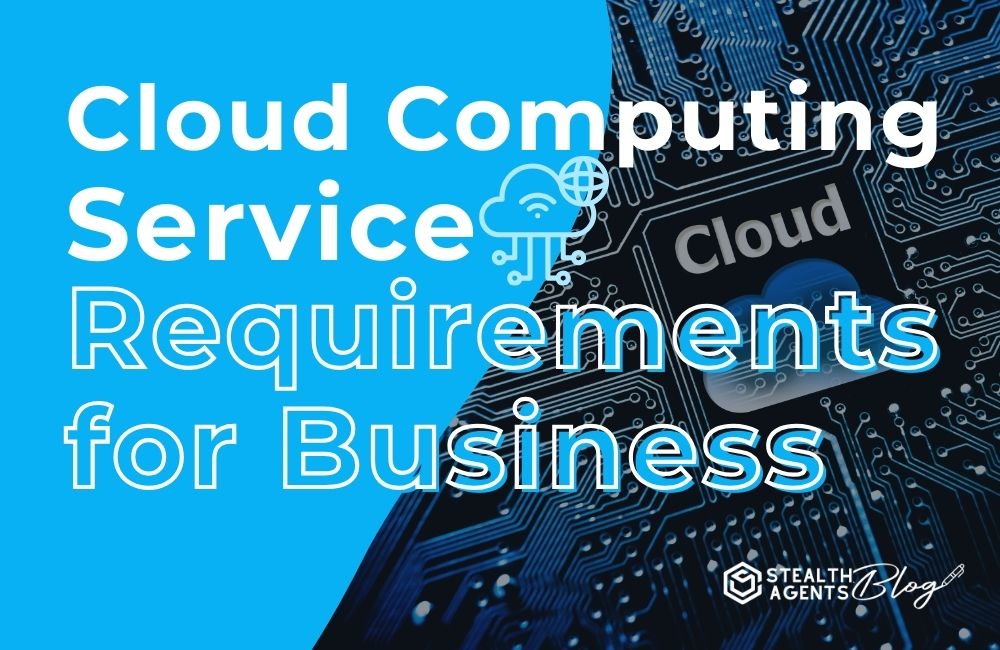Cloud Computing Made Simple for Businesses: A Comprehensive Guide to Success
Cloud computing has emerged as the cornerstone of modern business operations, revolutionizing the way companies handle data, manage resources, and scale their operations. Sift through the jargon and complexities, however, and cloud computing can seem like an elusive concept. Yet, the potential benefits for businesses are too significant to ignore. From small startups to established enterprises, understanding and effectively leveraging cloud services is no longer optional—it’s imperative for success in today’s digital landscape.
This guide is not just another technical manual laden with industry lingo. Here, we demystify cloud computing for you, the savvy business owner or curious entrepreneur who’s ready to transform their venture. By navigating through the essential steps of integrating cloud computing into your business strategy, we’ll arm you with the insights you need to streamline operations, bolster security, and drive sustainable growth.
Introduction: Cloud Computing Unwrapped
At its core, cloud computing is the delivery of computing services—including servers, storage, databases, networking, software, analytics, intelligence, and more—over the Internet (“the cloud”) to offer faster innovation, flexible resources, and economies of scale. But what does that really mean for your business?
Imagine not being tied down by the physical limitations of your office space or location. Envision having access to your business’ data and applications from anywhere in the world, securely and in real-time. This is the essence of cloud computing—a virtual platform that equips businesses with the tools to be agile, efficient, and creative.
The cloud is more than a buzzword; it’s the key to unlocking the full potential of your business. And as we traverse this digital age, it’s a narrative that every business should consider adopting.
Understanding Business Needs in the Cloud
Before leaping into the world of the cloud, it’s crucial first to understand why and how this shift can benefit your unique business. Not all clouds are created equal, and the path to successful cloud computing begins with clear goals and needs.
Scalability: Adapting With Your Business
A fundamental allure of cloud computing is its scalability. As your business grows, your computing power can grow with it. Conversely, during quieter periods, you can scale down to cut costs, without any of the long-term commitments or costly upgrades associated with traditional IT infrastructure.
The cloud enables agility—a quality that’s more vital than ever in today’s fast-paced business environment. Whether you’re experiencing sudden demand spikes or looking to test a new product, the cloud can match your pace, not limit it.
Security: Trusting the Cloud
Security concerns often reign supreme when considering the cloud. It’s true that entrusting your data to a third-party cloud provider demands robust safeguards. However, top-tier providers invest in state-of-the-art security protocols, often far surpassing the capabilities of most on-site IT infrastructures.
For businesses, this means benefiting from multi-layered security measures, data encryption, and continuous monitoring to protect against cyber threats. Nevertheless, it’s essential to choose a provider that aligns with your business’s security requirements and compliance needs.
Cost-Effectiveness: Beyond the Bottom Line
The cost model of cloud computing typically involves paying for what you use. This ‘pay-as-you-go’ structure eliminates the need for large upfront investments and allows businesses to manage and predict their IT costs more effectively.
In addition to direct cost savings on hardware and maintenance, the cloud offers more intangible savings. Consider the reduced need for on-premises IT staff, or the productivity gains that come with faster, more accessible technologies. Cloud computing isn’t just about reducing expenses; it’s about investing in a platform that drives value to your business.
Choosing the Right Cloud Service Provider
Selecting the correct cloud service provider is the linchpin of cloud computing success. With an increasing number of providers, all offering diverse services and features, it’s a task that requires careful consideration.
Factors to Consider
Begin with an assessment of your business’s technical needs, from the types of services you’ll require to the level of support you expect. Scalability and security are non-negotiable, so scrutinize the provider’s track record and reputation in these areas.
Consider practicalities too—geographical locations of data centers, redundancy, and recovery capabilities are pivotal, especially for global businesses. Lastly, factor in the ease of use and compatibility with your existing systems.
Comparison of Leading Providers
The top cloud service providers—such as Amazon Web Services (AWS), Microsoft Azure, and Google Cloud—are leaders for a reason. Each has its strengths and offerings that cater to specific business types and sizes. From comprehensive analytics to AI and machine learning, each provider boasts an array of tools to empower your business.
Leveraging data analytics through Amazon’s virtual assistant for better decision-making – make smarter decisions today. Hire us now!
It’s not just about the services themselves, but the ecosystem and community surrounding them. Look at the support, training, and resources available, and consider the potential for collaboration and integration with other businesses within the provider’s network.
Implementation Strategies
With the right provider by your side, the next step is implementation, a multifaceted process that involves planning, migration, and integration.
Migration Planning
Migrating to the cloud is akin to moving houses—you want it to be smooth, with minimal disruption. Start by identifying which systems or applications are best suited to an initial migration. What are the potential risks and complications? How will the transition affect your teams and their workflows?
A phased approach often works best, allowing you to address and iron out any issues as you go. Regular testing is essential to ensure the integrity and performance of your cloud services.
Integration with Existing Systems
Few businesses start from scratch on the cloud. Most have existing infrastructures that need to coexist and collaborate with their new cloud-based systems. This requires a thoughtful integration strategy.
APIs, or application programming interfaces, are the connective tissue of software systems. An effective integration strategy relies on APIs that enable data flows between your various applications and environments. The goal is a holistic IT environment where cloud services work in harmony with your on-premises systems.
Benefits of Cloud Computing for Businesses
The switch to cloud computing isn’t just about staying technologically relevant; it offers a myriad of benefits that can amplify your business’s performance.
Increased Flexibility and Mobility
With the cloud, your business can be as mobile as you. Access vital information or work on critical tasks from anywhere—home, the office, or halfway across the globe. Empowering your team to work remotely can lead to happier, more productive employees and can widen your talent pool to a global scale.
Enhanced Collaboration
Collaborating in real-time on cloud-based platforms breaks down physical barriers, enabling seamless teamwork regardless of location. Centralized data and applications ensure everyone is working from the same page, quite literally.
Improved Disaster Recovery
Cloud-based services provide backup and recovery solutions that are robust and often automated. In the event of a disaster, such as system failure or cyber-attack, your business can recover with minimal downtime, keeping operations running smoothly.
Takeaways
In a world perpetually on the brink of the next technological leap, cloud computing isn’t just a tool for survival—it’s a catalyst for growth. By embracing the cloud, your business can achieve the kind of flexibility, innovation, and cost-efficiency that was once the exclusive domain of the biggest players in the market. The time to act is now, and the choice to make is clear: the cloud is the present and the future of business.
By focusing on your unique business goals and selecting services that align, cloud computing can be the engine that propels your business forward. With the right provider and a well-thought-out implementation, the cloud can turn conceptual value into tangible results, propelling your operations, security, and bottom line to new heights.
If you haven’t yet considered the cloud, or if you’ve been hesitant to make the move, it’s time to take that next step. The providers are ready, the technologies are advanced, and your competition is likely already reaping the benefits. The cloud may seem complex, but with the right understanding and approach, it’s an avenue to business success that’s straightforward and, above all, achievable.











